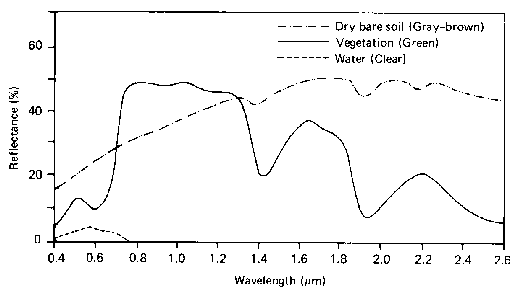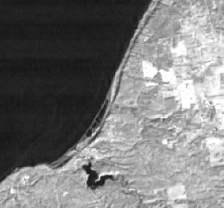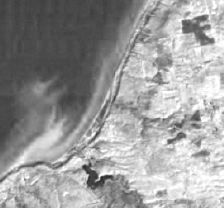 Energy Interactions with the Earth's Surface
Energy Interactions with the Earth's Surface Energy Interactions with the Earth's Surface
Energy Interactions with the Earth's SurfaceWhen electromagnetic energy from the sun hits the earth's surface three fundamental energy interactions are possible. Various fractions of the energy are:
 Reflected
Reflected
 Absorbed
Absorbed
 Transmitted
Transmitted
 The proportions of energy reflected,
absorbed, and transmitted will vary for different earth features.
The proportions of energy reflected,
absorbed, and transmitted will vary for different earth features.
 These differences permit us to
distinguish different features on an image.
These differences permit us to
distinguish different features on an image. Spectral Reflectance Curves
Spectral Reflectance Curves
The figure below shows typical spectral reflectance curves for three basic types of earth features: healthy green vegitation, dry bare soil, and clear lake water. These curves indicate how much incident energy would be reflected from the surface, and subsequently recorded by a remote sensing instrument. At a given wavelength, the higher the reflectance, the brighter the object appears in an image.
Note that vegetation reflects much more energy in the near-infrared (0.8 to 1.4 microns) than it does in visible light (0.4 to 0.7 microns). The amount of energy that vegetation reflects is related to the internal structure of the plant, and the amount of moisture in the plant. A surface like astro-turf, which is colored green, will appear dark in the near infrared, because it doesn't have the internal structure of living vegetation. Another feature to notice is that clear water reflects visible light only, so it will appear dark in infrared images.

The changes in reflectance as a function of wavelength can be seen in the images below. The image on the left shows the near-infrared, while the image on the right shows the green light. Sediment in the water is easier to see in the green image, because it has a higher reflectance. Also the pine plantation in the upper right corner is easier to see in the green image (the dark, E-shaped area), even though the reflectance is higher in the infrared image. Barren agricultual areas are more distinctive in the infrared image, where they appear bright.

